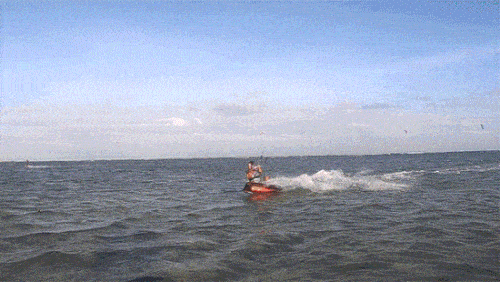
Let’s talk kitesurf tricks!
I’ve been kitesurfing for over ten years and tricks have always been my main motivation and attractor to get out in the water. For me, a session with no technical tricks performed is a bit meh.
This is attributed to my personality and affinity for technicality rather than adrenaline boost or perfect lines. It was exactly the same deal when I was in the skate park with my inlines, the slope with my snowboard or even the capoeira roda.
You got the basics, what trick comes next?
It’s safe to say my trick progression has slowed down over the years. I can blame less than ideal freestyle conditions or fear of injuries, but another big reason I haven’t pushed further in my trick progression is lack of inspiration.
It’s a pleasure to watch riders your own level or slightly better. A rider’s trick quiver as well as individual style and execution is such a great source of inspiration! We see way too little of this intermediate level in online media, where the sponsored riders’ level is always top grade. Even if it’s awesome to watch someone pull a double handle pass it’s simply too difficult to work as inspiration.
Unfortunately I rarely see kiters do tricks that inspire me on my local beaches. That’s got nothing to do with my amazing skill level (because trust me, it’s not that amazing), but more so with the fact that the Daves and Garys on the UK South coast get their thrills from boosting as big as they can. You’d be lucky to see a back roll.
So I thought, maybe you’re in the same situation. Although we can’t ride together, maybe this trick list and my progression from beginner to experienced kiter will inspire you to try something new next time you go out.
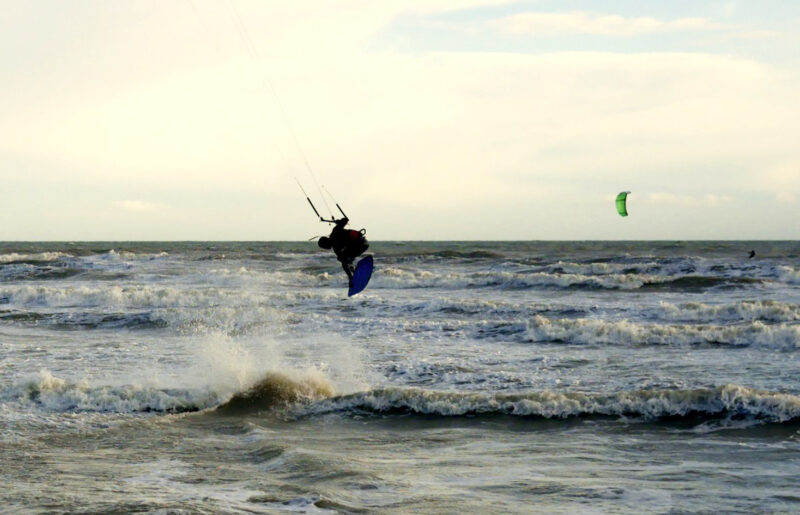
Trick progression – The early days
Like any newbie kitesurfer my first aerial tricks were the back roll, front roll and sent jumps. Adding height, consistency and variations to those tricks alone kept me busy for quite some time, and even to this day I’m still expanding and improving on them.
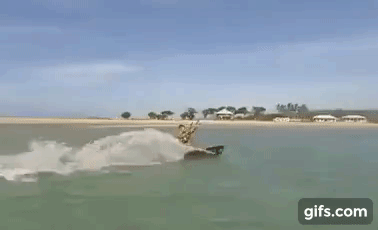
- The back roll is super simple to do, with barely no lift needed at all. Try some of these variations:
- Add a tail, indy or crail grab
- Back roll transition
- Hand drag transition: Lean into your harness, lift up your legs and dip your hand in the water
- Go double (or triple!) – Two spins is all I can do. You need more height and initiate the first rotation quite aggressively, and don’t stop looking over your shoulder or you’ll end up on your back.
- The front roll took longer to master but is now my go-to trick and it’s much easier to do a controlled front roll since you spot the landing much sooner than with a back roll. Try these to mix it up:
- Invert it! Front roll invert is easier than back roll invert – Simply throw your legs up and try to look at the sea 🙂 This is normally combined with a boned out tail grab, but Tom Court does a cool back flip variant.
- Double front roll, Same idea as for the back roll. Add grabs for more style.
- Crail grab front roll. I got into this recently. It’s fun and a bit weird, because you spin one direction but turn your shoulders the other, which slows down the rotation a lot.
- Front roll transition – You need a bit more height with this transition and you won’t spot the landing which makes it harder.
- Ready for the next level? Check out this video 🙂
But soon I wanted more. These guys did the type of kiteboarding I wanted to do, so it didn’t take long before I had a wakestyle board with boots. This was totally for style – one can obviously get into unhooked tricks without this, although I did enjoy the locked in feeling (for more on this topic I wrote an article about boots).
Unhooked freestyle tricks
Some people never unhook their kites. Zero interest. It’s not for everyone. The learning curve is steep and to do something even slightly stylish you need a lot of practise and commitment (for every crash you need to reel the kite in and relaunch when you could be logging hooked in tricks to your session).
But I think it’s the coolest aspect of kiteboarding, borrowing steez from wakeboarding, so of course I wanted to progress towards this type of tricks.
But man is it hard!
It’s so hard that I’ve basically narrowed down my unhooked sessions to those with perfect conditions to give myself a fair chance of landing anything at all. This means flat shallow water and smooth wind. Not the kind of conditions you find on the UK South coast much.
In the early years I was riding a lot more flat water spots in the estuary but nonetheless I never managed to do an aerial handle pass. Eventually I sort of gave up on the idea of progressing in freestyle, but if the right conditions reveal themselves I’m still chasing that railey to blind.
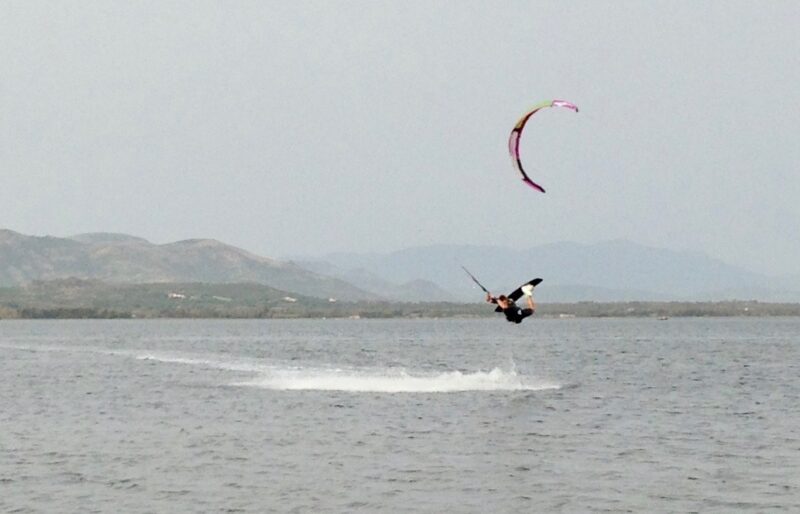
Surface tricks
Surface tricks is all about style. They’re small and playful board manipulations that you can do in isolation or add before or after an aerial trick. They’re good fun to practise because there’s not a lot of force involved if you crash but they can be quite technical so they offer up good challenge. Check out Jake Kelsick’s videos for surface trick inspiration – smooth as butter.
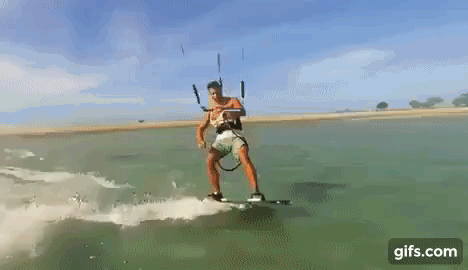
- Riding blind. Easy to practise without fins, but much easier with fins once you’re in the right riding position.
- Blind to toeside transition – Dirt easy, just bring the kite across the window and ride away.
- Butter slide / nose press – Really simple to do on flat water if you’re properly powered up, but fins make it much harder. Add a hand drag for extra style (can also be done as a tail press, riding backwards but this is harder).
- 360 pop to blind (hooked in) – Start toeside, go downwind, pop and spin around to blind. I normally do this off a small wave kicker close to shore.
- Hand drag – On a well powered day this trick is easy. You just need to work out the timing between the lift in the kite and inverting your body while dipping your back hand in the water. Try landing blind once you’ve mastered normal hand drag.
- Surface pass (unhooked) – A handle pass while going downwind. I find it easier to do a backside rotation (blind instead of wrapped), but it’s preference.
- Pop to blind – If you can do a surface pass, the next evolution is to pop into the rotation.
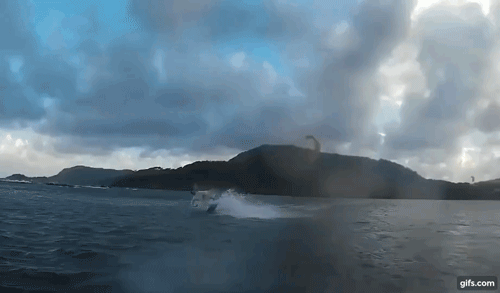
Powered hooked in tricks
For the powered tricks you load and pop using the board while keeping the kite low, just as with an unhooked new school trick. I often do these using a wave as a kicker to gain extra height. You know you have a good pop when you land with slack in your lines (but this also depends on your kite).
I’m still no master when it comes to powered tricks, but it’s a nice hybrid between hooked in and freestyle as you keep your kite low and your tricks are horisontal and powerful. The key to all these tricks is a good pop and don’t let the kite swing back on top of you. Hands in the middle of the bar and keep a bit of pressure on the front hand. Try and get as inverted and elongated as possible for more style.
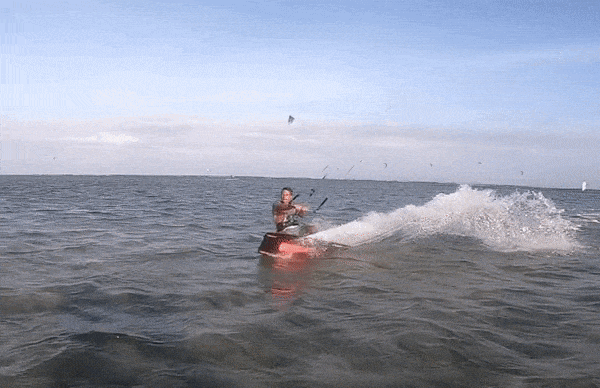
- Back roll and front roll – I don’t do these much. They look and feel a bit lame, especially the back roll. Front with a grab can be quite neat.
- Much better to add another 180 and do a back2toe or front2blind. You can even do a hooked in back2blind.
- Crail (aka Holy Grail, aka Holy Crail! – Back hand grabs the nose while tweaking out the back leg and go inverted. Hands down one of the most stylish tricks in the line-up. Pretty damn hard to get your body in position though. I’ve tried it for years now and still can’t do it. Some call it Nuke or Nuclear which is actually grabbing the heelside instead of the nose.
- Seatbelt – Similar but opposite. Front hand grabs the tail.
- Indy glide – Like the crail but grab indy, between your feet.
- Backside air – Snowboard classic. Pop like a railey and grab the heelside of your board with your front hand.
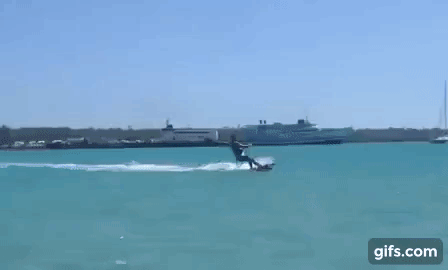
Pretty harmless kite loop tricks
I don’t think I’ll ever get into big air kite loops. There’s a lot of force involved and my balls aren’t big enough. But I do play around a lot with loops in lighter wind, slightly underpowered. A lot of kitesurfers draw a line in the sand in front of both unhooking and looping. Off limits, scary shit. This normally comes from a combination of associating these trick groups with PKRA (RIP) and KOTA, and them accidentally and with no control either unhooking or looping their kite (been there, done that).
They key to neutralising the fear for these tricks is understanding how the power is generated, and the best way to understand this is to play around with it in underpowered conditions. I learnt a lot about kite loops and how different loops generate different power from flying my 2m trainer kite.
Over time I started doing more and more loops, from downloop transitions to small loops on the descent of sent jumps. In the last few years I’ve had countless light wind sessions out on my 12m and 15m kites and this has given me plenty of opportunities to play around with loops in harmless conditions. I now feel very comfortable looping my 12m Krypto and do the following tricks in 12 to 18 knots:
- Back roll kite loop – Classic. Don’t spin too fast and don’t wait too long to loop the kite. Both will result in over rotating and landing on your back.
- Front roll kite loop – Funky feeling. Just commit and practise in really light wind.
- Back roll downloop transition – Smooth power transition to keep the speed in light wind transitions. The back roll barely requires no momentum at all.
- Back roll hand drag kite loop – Throw yourself into the hand drag early, before the kite passes 12. Let the kite fly across the window and end with a tight loop. Enjoy the ride!
- Dark slide – Same idea as above; throw yourself forward early and trust the lift in the kite. You can also practise this without the loop to get a feel for it.
General tips for improving your kitesurf tricks
A few handy tips I’ve gathered over the years:
- The Progression series has cult status. DVD number three; Advanced, is great for picking up tips and inspiration for your first unhooked tricks, kite loops and riding blind.
- My two favourite trick channels on YouTube; Kitesurf College and MACKiteboarding‘s Ride With Blake are both great at explaining basic concepts and intermediate tricks.
- Get someone to photograph your tricks, better yet film them. Your jump looks tiny from the beach, your invert is nowhere near inverted and your Steez yo! feels more like Please no! Watching yourself is a sobering experience, but once your ego has picked itself up you’re much better off thanks to it.
- As alluded to in the intro, you’ll progress faster if you have like-minded trick lovers to ride with. You can inspire each other, challenge each other and film each other. Win-win all around.
- Keep a trick journal. Writing down the tricks you want to learn and picking one of them as your focus for a session keeps you on track for where you want to be. Just remember to go easy on yourself and switch to something enjoyable if you keep crashing and beating yourself up about it. Find the balance between grit and flow.
- Try mixing up your gear. Finless boards allow you to easier do surface tricks, boots give you a lot more stability in take-off and landings, C-kites give you slack, short bars make spins more controlled… pick gear that help you do what you like.
- Ride often! Ha, a bit obvious I know, but honestly if you can find a way to ride more often it’s worth considering (look at me, I moved to the coast and can see the beach from my window).
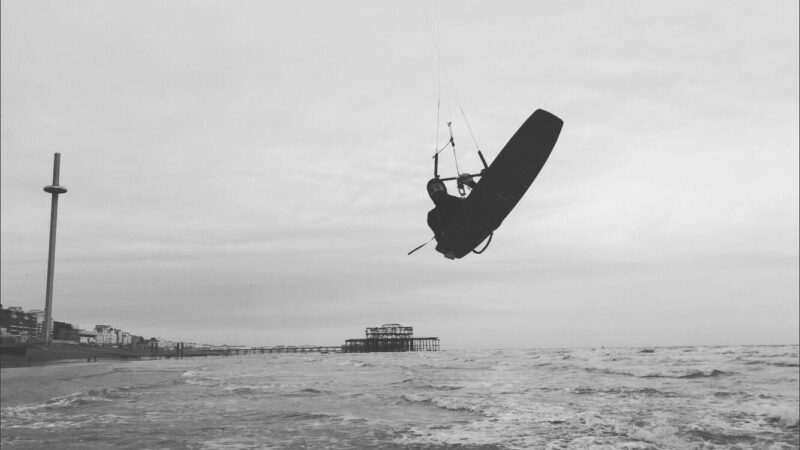
Some trick gifs were shot in Cuyo, Philippines and captured from this video by Frank Woelky. Others are from my Phan Rang, Vietnam trip.